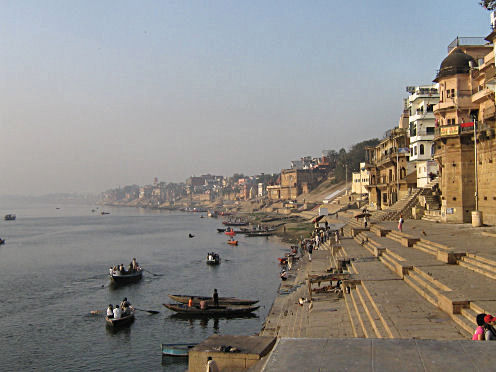

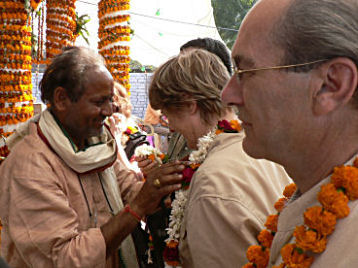 |
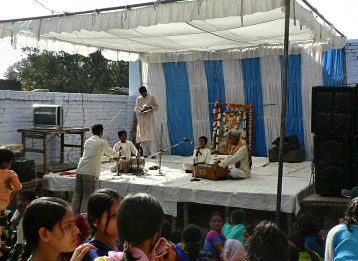 |
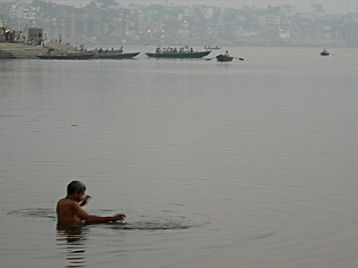 |
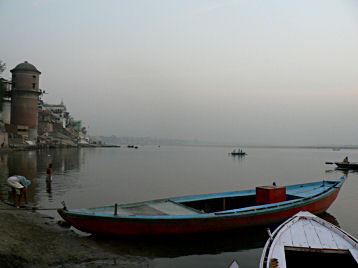 |
| Man praying in the holy Ganga at dawn | View down the river just before dawn |
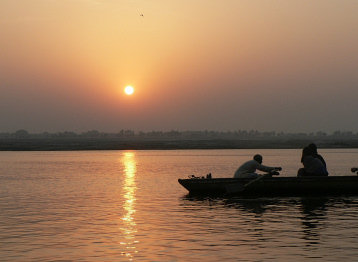 |
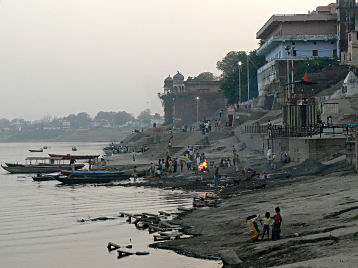 |
| The sun is rising over the Ganga | A funeral pyre has been burning all night, before the ashes are thrown into the holy Ganga |
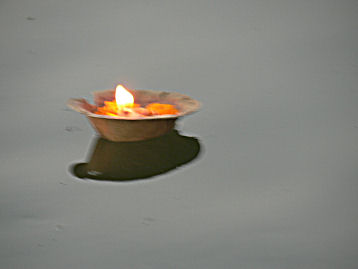 |
| We set our candles down on the water, thinking of dear friends who are not with us any more |
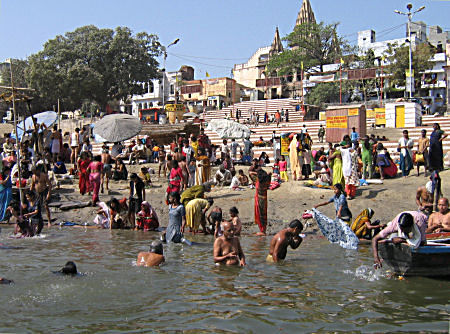 |
| Asi Ghat - the man in the front / middle is praying |
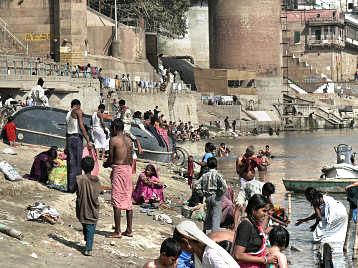 |
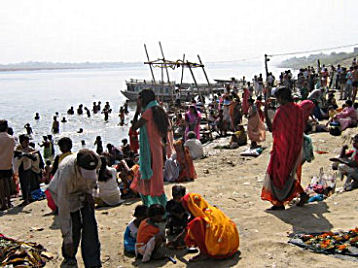 |
| Tulsi Ghat | Whole families have
come down to the Ganga riverbank |
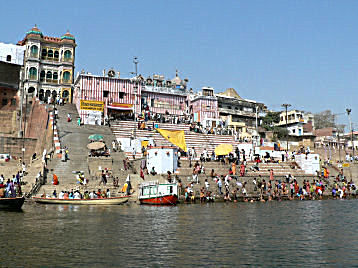 |
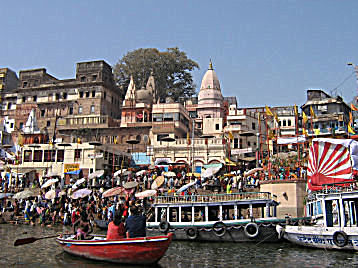 |
| Kedara Ghat | Dashashvamedh Ghat |
 |
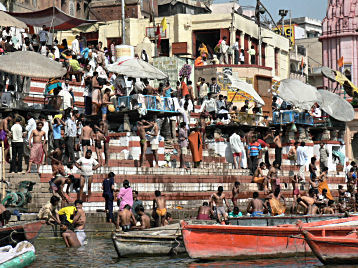 |
| Darabhanga Ghat with stately old palace | Close-up of Dashashvamedh Ghat with a myriad of bathers |
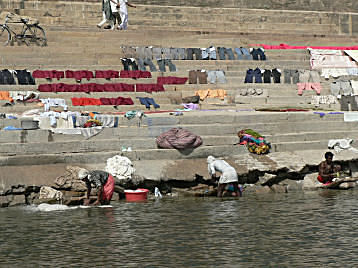 |
 |
| Dhobi (clothes washers) | Drying saris on the ghat |
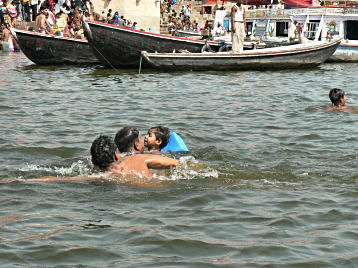 |
| Swimmers - the women don't swim, they just immerse themselves, in their saris |
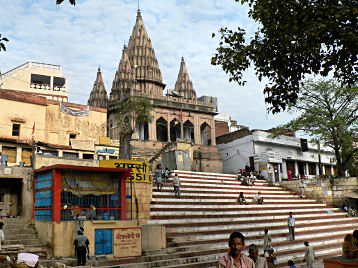 |
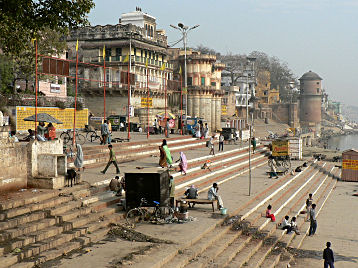 |
| Asi Ghat, in the
south -- the festive day of Shivaratri is over |
Gangamahal Ghat,
just north of Asi Ghat, on an ordinary day |
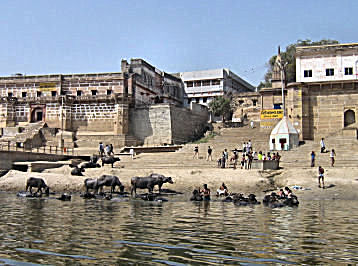 |
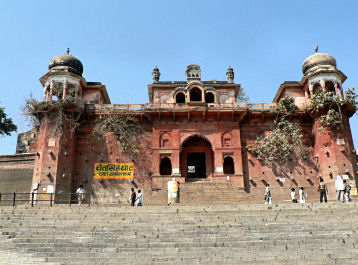 |
| Sacred cows in the
Ganga, some of them being washed by young men |
Chet Singh Palace at Shivala Ghat, owned by the maharajah of Varanasi |